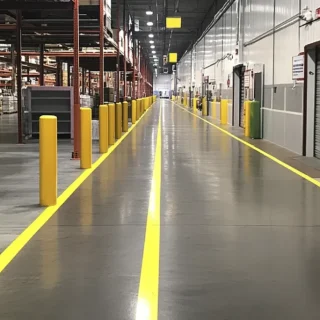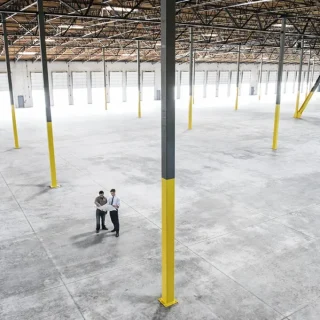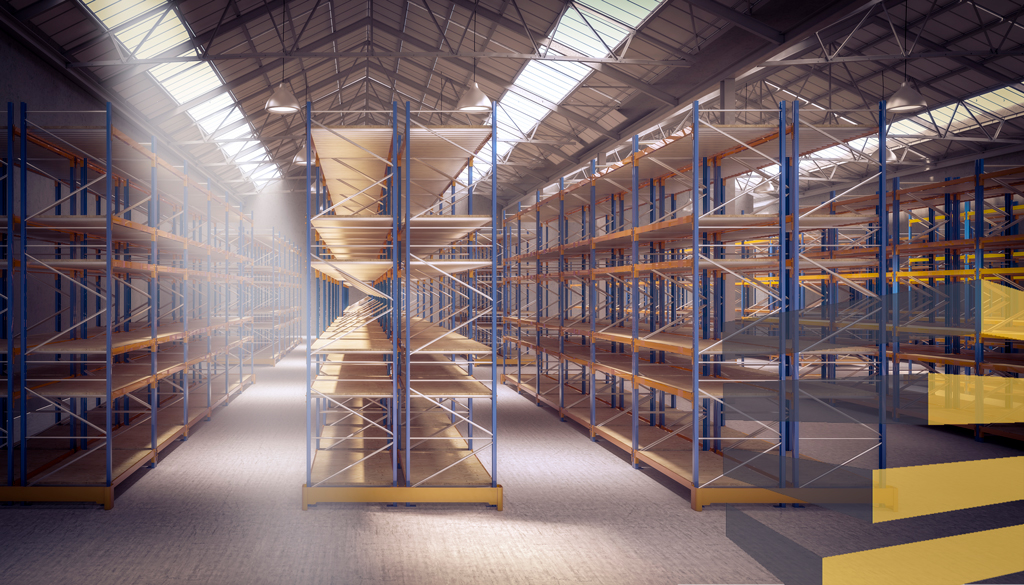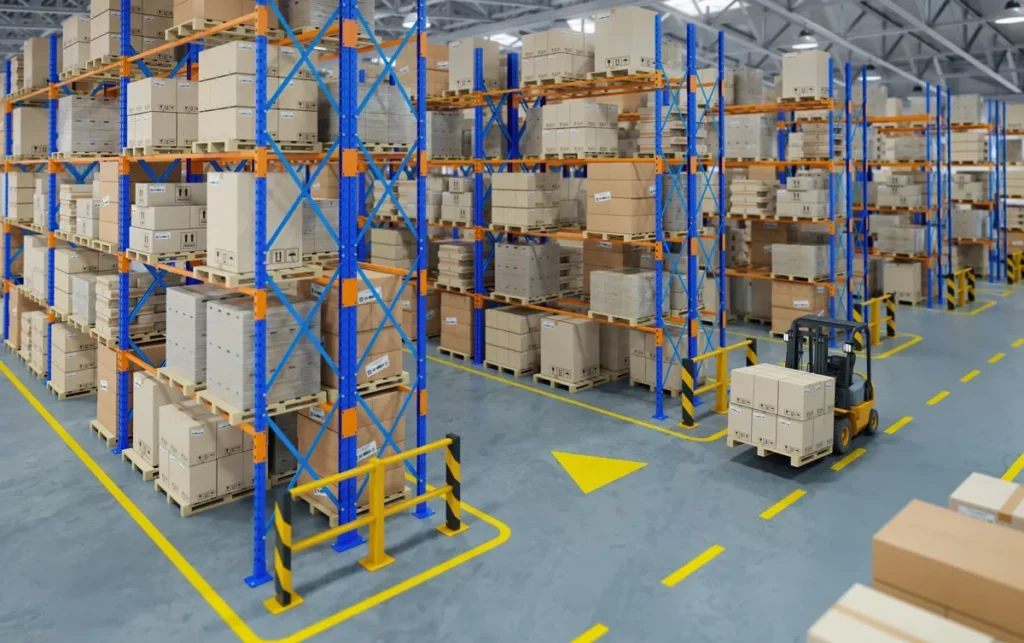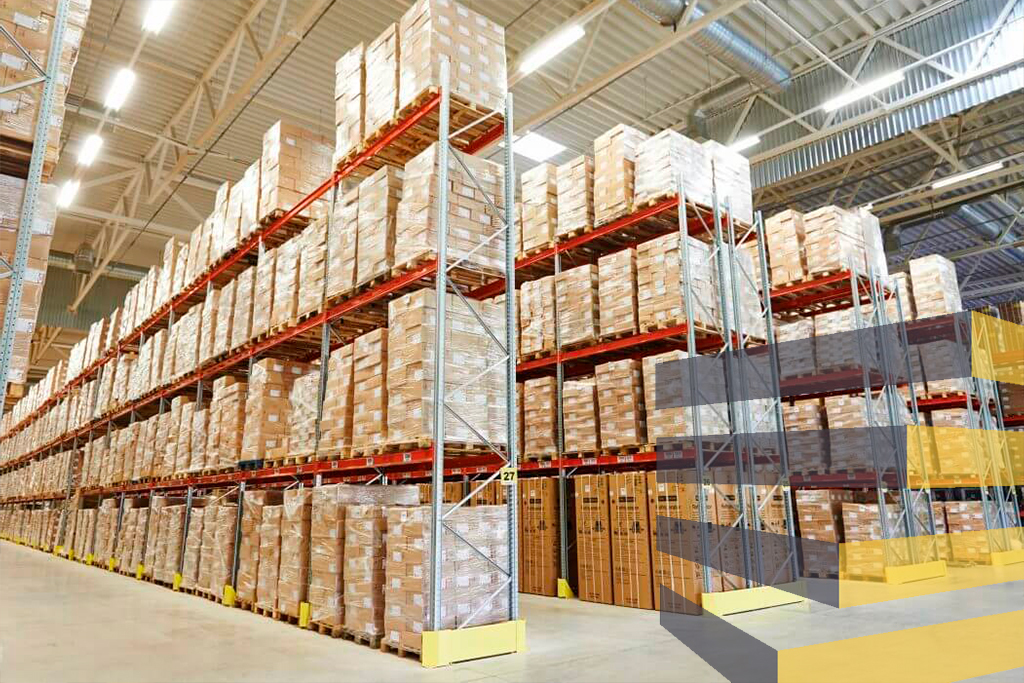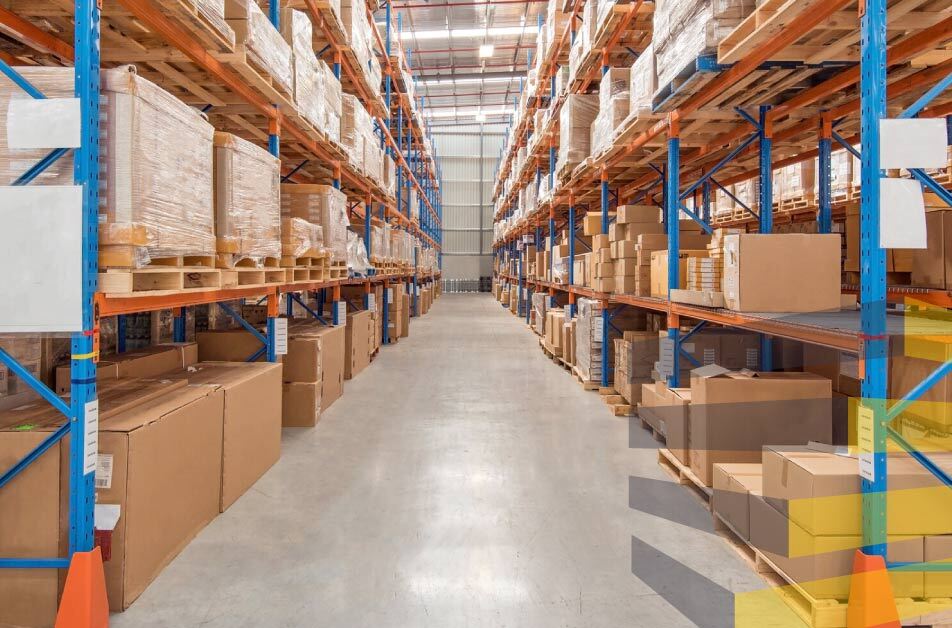El almacenamiento en estanterías de paletización es la columna vertebral de muchos almacenes y centros de distribución, por lo que cualquier esfuerzo por optimizar las operaciones implicará asegurarse de que el equipo adecuado está correctamente instalado y se aprovecha al máximo.
Tanto si supervisa los esfuerzos de optimización usted mismo como si trabaja con un profesional, identificar y abordar las ineficiencias causadas por los tipos de palés y estanterías en uso, así como la forma en que encajan en la configuración de la infraestructura más amplia, será clave para el éxito.
Mientras que el almacenamiento en estanterías de paletización se refiere principalmente a las propias estanterías y palés, la optimización implica comprender cómo encajan en el flujo de trabajo, teniendo en cuenta y modificando también otros elementos del almacén, como la protección contra colisiones.
En caso de que se decida buscar ayuda profesional para la configuración de un almacén de estanterías de paletización convencional, el proveedor de servicios de consultoría para la optimización de almacenes que se elija también podrá suministrar e instalar las nuevas funciones que acuerde.
Contáctanos para obtener más información sobre cómo optimizar su almacenamiento en estanterías de paletización convencional en Brasil, México o Estados Unidos.
Almacenamiento en estanterías de paletización: 5 aspectos cruciales a tener en cuenta
La optimización de su almacenamiento en estanterías de paletización implicará las siguientes cinco consideraciones clave:
1) Tipo de estantería
Una de sus consideraciones inmediatas será si la estantería en uso es adecuada para sus necesidades. Existe una amplia variedad de estanterías de almacenamiento, como las estanterías de tipo teardrop, las estanterías de gran profundidad, las estanterías dinámicas y las estanterías drive-in, por nombrar sólo algunas.

Para instalaciones en las que el espacio es escaso o en las que algunas mercancías permanecen almacenadas durante largos periodos, las estanterías de paletización doble, también conocidas como estanterías de gran profundidad, pueden ser las más adecuadas. Mientras que para las instalaciones en las que circulan regularmente mercancías pesadas, las estanterías dinámicas pueden resultar especialmente útiles.
2) Tipos de paletas
Aunque los palés de madera son tradicionalmente los más utilizados en almacenes y centros de distribución, hoy en día se utilizan muchos tipos de pallets. Decidir qué palés utilizar dependerá del tipo de mercancías que vayan a almacenar y de la frecuencia con la que haya que trasladarlas.
Porque los distintos tipos de paletas -incluidas las de plástico, metal e incluso las de papel- ofrecen distintos niveles de durabilidad y transportabilidad, lo que significa que es posible que deba utilizar distintos tipos de paletas en distintas zonas de las instalaciones.
3) Utilización de barreras de seguridad
Las barreras de seguridad para almacenes son una parte fundamental de la infraestructura de cualquier espacio en el que circulen mercancías y vehículos pesados. Además de mantener a salvo a las personas, estas barreras también protegen las mercancías y los equipos, lo que a su vez ayuda a evitar pérdidas y a prolongar la vida útil de las estanterías.
Las barreras de seguridad se presentan en una gran variedad de formas -como barandillas, bolardos, protectores de columnas, barreras retráctiles y puertas de seguridad- y para garantizar que dispone de toda la infraestructura de seguridad adecuada para mantener sus estanterías protegidas y en servicio deberá asegurarse de elegir y colocar las barreras correctamente.

4) Calidad de la instalación
Las estanterías correctamente montadas e instaladas no sólo funcionan mejor, sino que también mantienen el espacio más seguro, razón por la que muchos responsables de logística optan por trabajar con un especialista en instalaciones. Un instalador experimentado también estará en condiciones de resolver cualquier problema inesperado que surja durante la instalación, basándose en su experiencia.
Otra gran ventaja de la instalación profesional es que, posteriormente, se puede recurrir al mismo proveedor para la inspección continua, que debe realizarse periódicamente y es otra consideración importante.
5) Inspecciones y mantenimiento
El mantenimiento periódicos y la inspección de las estanterías de almacén son necesarios para mantener el equipo en condiciones óptimas y prolongar su vida útil. En algunas jurisdicciones, la inspección y el mantenimiento periódicos serán un requisito legal, pero incluso cuando no sea el caso, debe hacerse.
Cuando se trabaja con un instalador profesional de estanterías, ese proveedor suele ofrecer también servicios de inspección y mantenimiento, que pueden incluirse como parte permanente de un servicio de instalación o contratarse de forma puntual.
Elegir un proveedor para optimizar el almacenamiento en estanterías de paletización convencional
La elección del proveedor adecuado para optimizar su almacenamiento en estanterías de paletización dependerá de dónde se encuentre y de cuáles sean sus necesidades. En caso de que vaya a crear un centro muy especializado, es posible que tenga que buscar un proveedor con los conocimientos necesarios para ayudarle.
De lo contrario, probablemente querrá encontrar un proveedor que preste servicio en su zona y tenga un historial documentado de clientes satisfechos. Una buena forma de identificarlos es a través de las reseñas en línea, aunque merece la pena buscarlas en diferentes fuentes, para evitar que nos lleven a engaño.
Los instaladores profesionales de estanterías también suelen ser expertos en la instalación de otros elementos del almacén, como barreras de protección y señalización del suelo. Por tanto, si vas a instalar estanterías como parte de un proyecto de instalación o traslado, también pueden ofrecerte un paquete más completo de servicios de instalación.
En última instancia, cuando contratas a instaladores profesionales, garantiza que sus operaciones cumplen todas las normativas, como las establecidas por la OSHA en Estados Unidos. Esto significa que debes preocuparte por los problemas de cumplimiento inesperados que surjan durante las inspecciones de las autoridades.
Serviap Logistics instala estanterías de almacén
En Serviap Logistics, suministramos e instalamos estanterías en Brasil, México y Estados Unidos, como parte de una cartera más amplia de servicios de optimización e instalación de almacenes.
Esta cartera también incluye el suministro y la instalación de señalización, barreras anticolisión y señalización del suelo. También suministramos etiquetas y ofrecemos servicios de mantenimiento y limpieza industrial.
Nuestra capacidad para cumplir plazos ajustados sin sacrificar la seguridad ni la calidad nos ha convertido en el socio de confianza para la preparación de almacenes de algunas de las empresas más grandes y conocidas del mundo. Así que si está interesado en optimizar su almacenamiento en estanterías de paletización, podemos ayudarte.
Contáctanos para más información.


